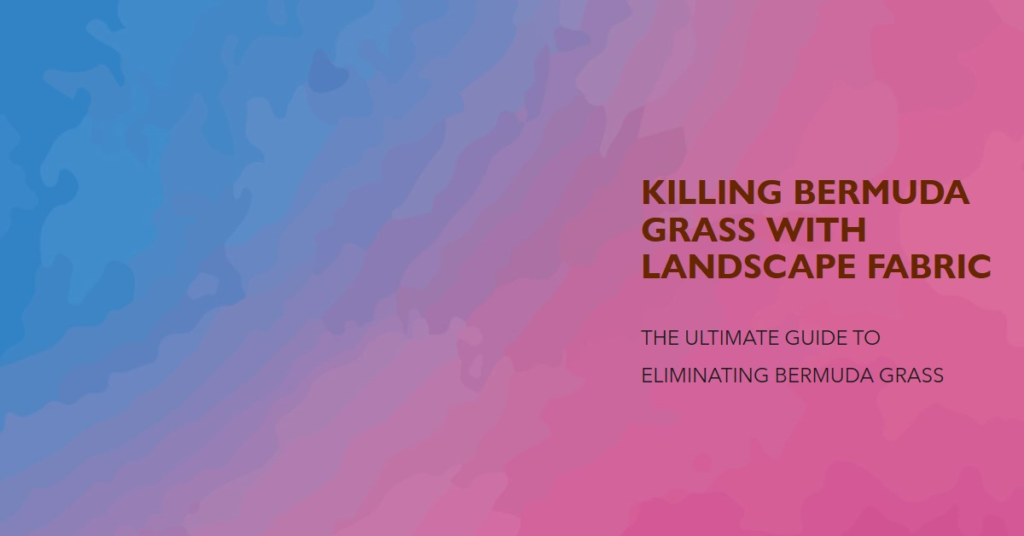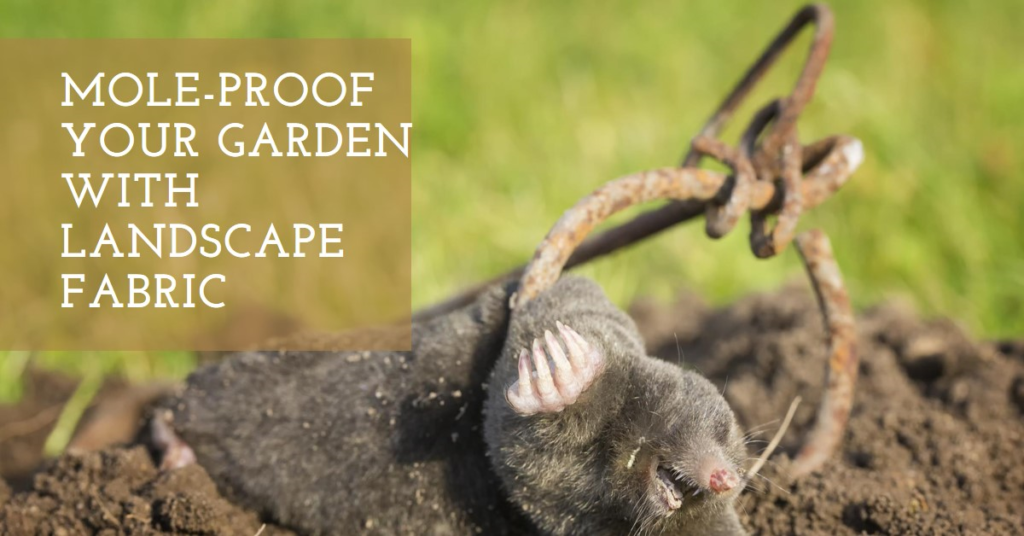
Table of Contents
- Introduction: Tackling the Bermuda Grass Challenge
- Understanding Bermuda Grass: A Stubborn Adversary
- Landscape Fabric: An Overview
- The Mechanics of Landscape Fabric Against Bermuda Grass
- Proper Installation: Key to Success
- Combining Strategies for Enhanced Control
- The Role of Soil Health
- Long-term Maintenance: Vigilance is Crucial
- Alternatives to Landscape Fabric
- Conclusion: A Multifaceted Approach
Introduction: Tackling the Bermuda Grass Challenge
Bermuda grass, a robust and aggressive warm-season grass, is a common sight in many lawns and gardens. Its resilience and ability to thrive in various soil types and climates make it a popular choice for turfgrass. However, its invasive nature can pose significant challenges for gardeners and landscapers who wish to maintain control over their planting areas. One frequently asked question is whether landscape fabric can effectively kill Bermuda grass and prevent its relentless spread.
Understanding Bermuda Grass: A Stubborn Adversary
To appreciate the effectiveness of landscape fabric, it is crucial to understand the biology and behavior of Bermuda grass. This grass species spreads via both seeds and vegetative structures such as stolons (above-ground runners) and rhizomes (underground stems). These growth habits enable Bermuda grass to establish itself quickly and compete aggressively with other plants for resources.
Bermuda grass’s tenacity is further enhanced by its tolerance to drought, heavy foot traffic, and various soil conditions. Its ability to regenerate from even the smallest fragments of roots or stems makes eradication particularly challenging. Therefore, any method aimed at controlling or eliminating Bermuda grass must address its multifaceted growth strategies.
Landscape Fabric: An Overview
Landscape fabric, also known as weed barrier or weed control fabric, is a geotextile material designed to suppress weed growth. Made from woven or non-woven polypropylene, landscape fabric allows water and nutrients to penetrate while blocking sunlight, which is essential for photosynthesis. By cutting off sunlight, landscape fabric aims to starve weeds and prevent their emergence.
This method of weed control is popular due to its non-chemical nature and long-lasting effectiveness. However, when it comes to Bermuda grass, the question remains: is landscape fabric a viable solution?
The Mechanics of Landscape Fabric Against Bermuda Grass
When applied correctly, landscape fabric can indeed provide a significant barrier against Bermuda grass. The fabric’s primary function is to block sunlight, which is crucial for the survival of any plant, including Bermuda grass. By depriving the grass of light, the photosynthetic process is halted, leading to the gradual weakening and eventual death of the grass.
However, the effectiveness of landscape fabric against Bermuda grass is not absolute. Bermuda grass’s underground rhizomes can sometimes find their way through the seams and edges of the fabric or even penetrate it if the fabric is not of sufficient quality or properly installed. Thus, while landscape fabric can play a crucial role in controlling Bermuda grass, it must be part of a comprehensive strategy.


Proper Installation: Key to Success
The success of landscape fabric in combating Bermuda grass heavily depends on proper installation. Here are essential steps to ensure maximum effectiveness:
- Site Preparation: Remove all visible Bermuda grass and other vegetation. This step minimizes the chance of grass growing through the fabric.
- Choose the Right Fabric: Select a high-quality, heavy-duty landscape fabric. Thicker fabrics offer better resistance to penetration by aggressive rhizomes.
- Overlap and Secure: Ensure the fabric pieces overlap adequately to prevent any gaps where grass could emerge. Secure the fabric with landscape staples to keep it in place.
- Mulch Coverage: Cover the fabric with a thick layer of mulch. Mulch not only provides additional sunlight blockage but also helps maintain soil moisture and temperature, further discouraging Bermuda grass growth.
Combining Strategies for Enhanced Control
While landscape fabric is a potent tool, relying solely on it might not guarantee complete eradication of Bermuda grass. Combining multiple control methods can enhance effectiveness:
- Chemical Treatments: Applying herbicides specifically formulated for Bermuda grass can help target any remnants that manage to penetrate the fabric.
- Frequent Monitoring: Regularly inspect the area for any signs of Bermuda grass and address them promptly. Early intervention is key to preventing a resurgence.
- Physical Barriers: Installing physical barriers such as metal or plastic edging around the perimeter can help prevent the spread of rhizomes into the controlled area.
The Role of Soil Health
Healthy soil is less hospitable to invasive species like Bermuda grass. Encouraging a robust ecosystem of beneficial microbes and maintaining proper pH levels can reduce the likelihood of Bermuda grass taking hold. Incorporating organic matter, such as compost, can improve soil structure and nutrient availability, making it harder for Bermuda grass to compete.
Long-term Maintenance: Vigilance is Crucial
Even after successfully installing landscape fabric and employing additional control measures, long-term maintenance is essential. Bermuda grass is notorious for its persistence, and complacency can lead to its resurgence. Regularly renewing mulch, inspecting the fabric for wear and tear, and promptly addressing any breaches are critical steps in maintaining control.
Additionally, understanding seasonal growth patterns of Bermuda grass can aid in timing interventions for maximum impact. For example, applying pre-emergent herbicides in early spring can prevent new growth from seeds.
Alternatives to Landscape Fabric
For those seeking alternatives to landscape fabric, several other methods can be effective:
- Solarization: This method involves covering the soil with clear plastic to trap solar heat, which raises soil temperatures to levels lethal to Bermuda grass. While effective, it requires several weeks of high temperatures to work.
- Manual Removal: Digging out Bermuda grass, including all roots and rhizomes, can be effective for small areas. However, this method is labor-intensive and requires vigilance to ensure all plant material is removed.
- Organic Mulches: Using organic mulches such as wood chips or straw can suppress Bermuda grass growth by blocking light and providing a habitat for beneficial organisms that outcompete the grass.
Conclusion: A Multifaceted Approach
In conclusion, while landscape fabric can significantly aid in controlling Bermuda grass, it is not a standalone solution. The grass’s aggressive nature and multiple propagation methods mean that a multifaceted approach is necessary for effective long-term control. Proper installation of high-quality landscape fabric, combined with additional strategies such as chemical treatments, physical barriers, and regular maintenance, can create a formidable defense against Bermuda grass.
By understanding the biology of Bermuda grass and employing a comprehensive control plan, gardeners and landscapers can achieve success in managing this challenging adversary. The journey requires persistence, but with the right tools and techniques, it is possible to reclaim and maintain a Bermuda grass-free landscape.


